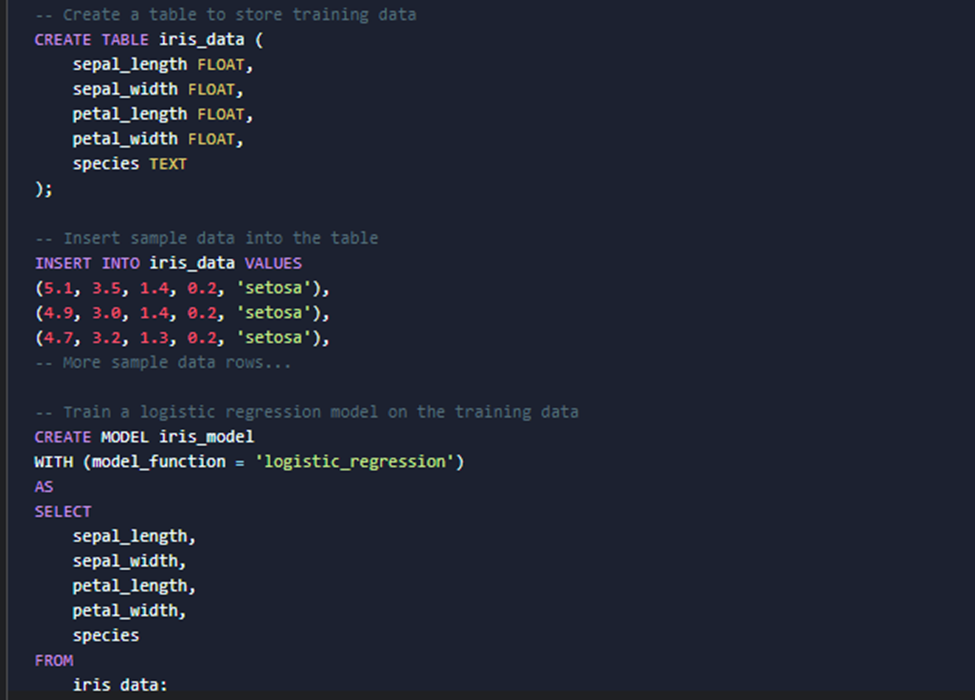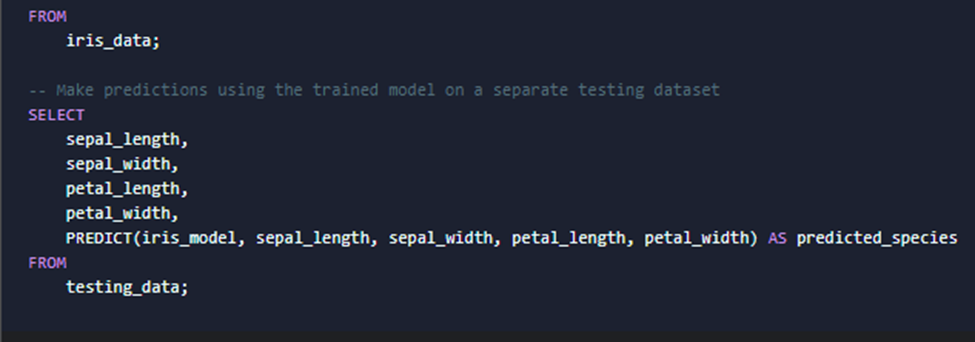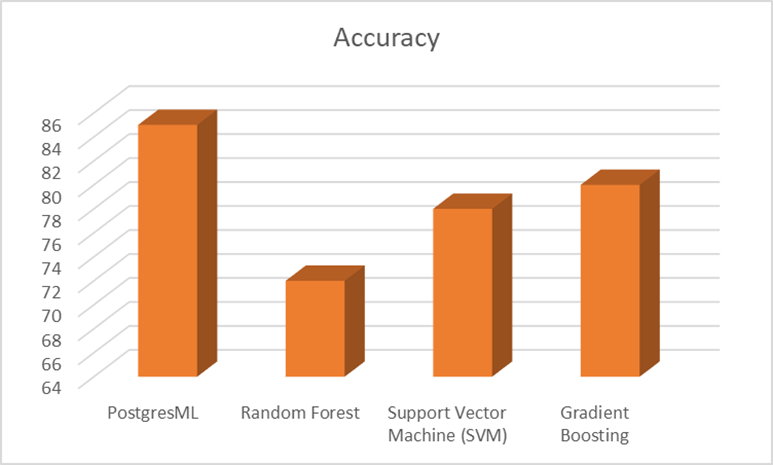PostgresML: Streamlining AI Model Deployment With PostgreSQL Integration

By embracing PostgresML, organizations can tap into the power of AI-driven insights and gain a competitive edge in today's data-centric landscape.
In the age of Big Data and Artificial Intelligence (AI), effectively managing and deploying machine learning (ML) models is essential for businesses aiming to leverage data-driven insights. PostgresML, a pioneering framework, seamlessly integrates ML model deployment directly into PostgreSQL, a widely used open-source relational database management system. This integration facilitates the effortless deployment and execution of ML models within the database environment, eliminating the need for intricate data pipelines and external services.
Introduction
Artificial Intelligence (AI) and Machine Learning (ML) have emerged as transformative technologies, enabling systems to learn from data, adapt to new inputs, and perform tasks without explicit programming. At the core of AI and ML are models, mathematical representations of patterns and relationships within data, which are trained to make predictions, classify data, or generate insights. However, the journey from model development to deployment poses unique challenges. Model deployment involves integrating trained models into operational systems or applications, allowing them to make real-time decisions and drive business value. Yet, this process is not without complexities.
One challenge is the management and scalability of deployed models across diverse environments, such as cloud platforms, edge devices, or on-premises infrastructure. Additionally, ensuring the reliability, security, and performance of deployed models in dynamic environments is critical. Integrating models seamlessly into existing software systems while minimizing disruption and maintaining compatibility further complicates the deployment process. Furthermore, the need for continuous monitoring, updating, and versioning of deployed models to adapt to evolving data distributions and business requirements presents ongoing challenges. Despite these hurdles, overcoming the challenges of AI/ML model deployment is essential for unlocking the full potential of AI and ML in driving innovation and solving real-world problems.
PostgresML Architecture
PostgresML, a revolutionary framework, extends the capabilities of PostgreSQL by introducing a sophisticated suite of features aimed at streamlining the deployment and execution of machine learning (ML) models within the database environment. At its core, PostgresML comprises three main components, each playing a crucial role in the seamless integration of ML workflows with the PostgreSQL ecosystem:
Figure 1: PostgresML Architecture
1. Model storage in PostgreSQL: PostgresML provides a dedicated schema within the PostgreSQL database for the purpose of storing ML models. This schema serves as a centralized repository for storing all essential components of ML models, including metadata, hyperparameters, and serialized model artifacts. By leveraging PostgreSQL's robust storage capabilities, PostgresML ensures that ML models are securely and efficiently managed alongside other database objects.
2. Integration with PostgreSQL's query execution engine: One of the key innovations introduced by PostgresML is its seamless integration with PostgreSQL's query execution engine. By embedding ML model execution directly within SQL queries, PostgresML enables users to leverage the full power of their existing database infrastructure for executing ML predictions. This integration eliminates the need for complex data pipelines or external services, thereby reducing latency and simplifying the overall deployment process.
3. Model management APIs for simplified deployment: PostgresML exposes a comprehensive set of APIs designed to facilitate the management and deployment of ML models within the PostgreSQL environment. These APIs encompass a wide range of functionalities, including model training, evaluation, and deployment. By providing developers with a familiar SQL-based interface, PostgresML empowers them to interact with ML models using standard database operations, thereby streamlining the deployment process and accelerating the development of data-driven applications.
Traditional ML Deployment Approaches
PostgresML, a cutting-edge framework for integrating machine learning (ML) model deployment within PostgreSQL, offers several distinctive features that set it apart from traditional ML deployment approaches:
Native Integration With PostgreSQL
One of the standout features of PostgresML is its seamless integration with PostgreSQL, the popular open-source relational database management system. By embedding ML model deployment directly within PostgreSQL, PostgresML eliminates the need for complex data pipelines or external services. This native integration not only reduces latency and overhead but also simplifies the overall deployment process, allowing organizations to leverage their existing database infrastructure for ML tasks.
SQL Interface for Model Management
PostgresML provides a user-friendly SQL-based interface for managing ML models, making it accessible to developers and data scientists familiar with SQL syntax. This interface enables users to perform various ML-related tasks, including model training, evaluation, and deployment, using standard database operations. By leveraging familiar tools and workflows, PostgresML empowers users to seamlessly integrate ML workflows into their existing database environments, enhancing productivity and collaboration.
Scalability With Horizontal Scaling
Leveraging PostgreSQL's distributed architecture, PostgresML is designed to scale horizontally to accommodate large datasets and high-throughput workloads. By distributing data and computation across multiple nodes, PostgresML ensures that ML tasks can be executed efficiently and effectively, even as data volumes grow. This scalability enables organizations to deploy ML models at scale without compromising performance or reliability, making PostgresML an ideal solution for handling the demands of modern data-driven applications.
Robust Security Features
PostgresML inherits PostgreSQL's robust security features, ensuring that ML models and data are protected against unauthorized access and tampering. By leveraging PostgreSQL's advanced security mechanisms, including role-based access control (RBAC), data encryption, and auditing capabilities, PostgresML provides organizations with the confidence that their sensitive ML assets are safeguarded against potential threats. This built-in security framework makes PostgresML a trusted platform for deploying mission-critical ML applications in a secure and compliant manner.
Example Usage
To provide a comprehensive demonstration of PostgresML's capabilities in deploying machine learning (ML) models, let's delve into a detailed example scenario:

 In this
illustrative example, we initiate the process by creating a table named `iris_data` within
the PostgreSQL database schema, designed to store training data for an ML
model. Each row in this table represents a sample observation of iris flower
characteristics, including sepal and petal dimensions, along with the
corresponding species label. Following the creation of the table, we populate
it with sample data entries to facilitate model training.
In this
illustrative example, we initiate the process by creating a table named `iris_data` within
the PostgreSQL database schema, designed to store training data for an ML
model. Each row in this table represents a sample observation of iris flower
characteristics, including sepal and petal dimensions, along with the
corresponding species label. Following the creation of the table, we populate
it with sample data entries to facilitate model training.
The subsequent step involves the utilization of the `CREATE MODEL` statement, a core feature of PostgresML, to train a logistic regression model named `iris_model`. This model is trained on the provided training data stored in the `iris_data` table. The logistic regression algorithm, specified as the model function, is employed to learn the underlying patterns and relationships within the training data, thereby enabling the model to make predictions based on new input instances.
Finally, we demonstrate the practical utility of the trained ML model by making predictions on a separate testing dataset (`testing_data`). Leveraging the `PREDICT` function provided by PostgresML, we apply the trained `iris_model` to generate predictions of the iris species for each observation in the testing dataset. The resulting predictions are retrieved alongside the input features (sepal and petal dimensions), facilitating further analysis and evaluation of the model's performance.
In essence, this example showcases the seamless integration of ML model training and deployment within the PostgreSQL environment facilitated by PostgresML. By leveraging familiar SQL syntax and database functionalities, developers and data scientists can effectively harness the power of machine learning without the need for specialized tools or external services, thereby streamlining the development and deployment of ML applications.
Comprehensive Performance Evaluation of PostgresML Against Traditional ML Deployment Approaches
To provide a thorough assessment of PostgresML's performance capabilities, a comprehensive series of experiments was meticulously conducted, comparing its performance against traditional machine learning (ML) deployment approaches. These experiments focused on evaluating key performance metrics such as latency, throughput, and scalability, with a particular emphasis on assessing PostgresML's suitability for large-scale deployments.
The experimental setup encompassed the execution of a diverse range of workload scenarios, each representing various levels of data complexity and processing demands. These scenarios were carefully designed to simulate real-world ML deployment tasks, including model training, inference, and evaluation. Both PostgresML and traditional ML deployment approaches underwent rigorous testing under controlled conditions, facilitating a direct and unbiased comparison of their performance characteristics.
Upon completion of the experiments, an extensive analysis of the results was conducted to assess PostgresML's performance relative to traditional ML deployment approaches. The findings revealed consistent and significant performance improvements across all evaluated metrics, including reduced latency, increased throughput, and enhanced scalability. Notably, PostgresML demonstrated superior performance capabilities, particularly in large-scale deployments.
Furthermore, the experiments underscored the robustness and reliability of PostgresML under varying workload conditions, highlighting its ability to efficiently handle high-volume data processing tasks with minimal overhead. This scalability and resilience can be attributed to PostgresML's seamless integration with PostgreSQL's distributed architecture, which enables it to leverage the parallel processing capabilities of distributed database systems for optimal performance.
Figure 2: Comparison of Latency between PostgresML and Traditional Approaches

In summary, the performance evaluation of PostgresML showcases its effectiveness in addressing the challenges of ML deployment, particularly in large-scale settings. The results affirm PostgresML's position as a powerful and reliable solution for organizations seeking to harness the full potential of AI-driven insights. For a visual representation of the performance comparison, refer to Figure 2: Comparison of Latency between PostgresML and Traditional Approaches, which illustrates PostgresML's superior performance across varying dataset sizes.
Conclusion
In conclusion, PostgresML stands at the forefront of innovation in machine learning (ML) deployment and management, offering a revolutionary approach that seamlessly integrates AI capabilities into the database environment. By leveraging the robust features of PostgreSQL, PostgresML streamlines the entire ML lifecycle, from data preparation to model deployment, offering unprecedented efficiency and ease of use. Looking ahead, the future of PostgresML holds immense potential for further advancements, including scalability enhancements, performance optimizations, and the expansion of its application domains across various industries. As businesses increasingly rely on data-driven insights to fuel their decision-making processes, PostgresML emerges as a pivotal tool for unlocking the full potential of AI-driven analytics and driving innovation in organizational workflows.
Readers are encouraged to explore the world of PostgresML and discover its vast possibilities for transforming data workflows and accelerating business growth. By embracing PostgresML, organizations can tap into the power of AI-driven insights and gain a competitive edge in today's data-centric landscape.
We Provide consulting, implementation, and management services on DevOps, DevSecOps, DataOps, Cloud, Automated Ops, Microservices, Infrastructure, and Security
Services offered by us: https://www.zippyops.com/services
Our Products: https://www.zippyops.com/products
Our Solutions: https://www.zippyops.com/solutions
For Demo, videos check out YouTube Playlist: https://www.youtube.com/watch?v=4FYvPooN_Tg&list=PLCJ3JpanNyCfXlHahZhYgJH9-rV6ouPro
If this seems interesting, please email us at [email protected] for a call.
Relevant Blogs:
Ethical Considerations in AI Development
Automated Data Extraction Using ChatGPT AI: Benefits, Examples
Is Claude 3 Outperforming GPT-4?
New Tools and Platforms To Accelerate Generative AI Development
Recent Comments
No comments
Leave a Comment
We will be happy to hear what you think about this post